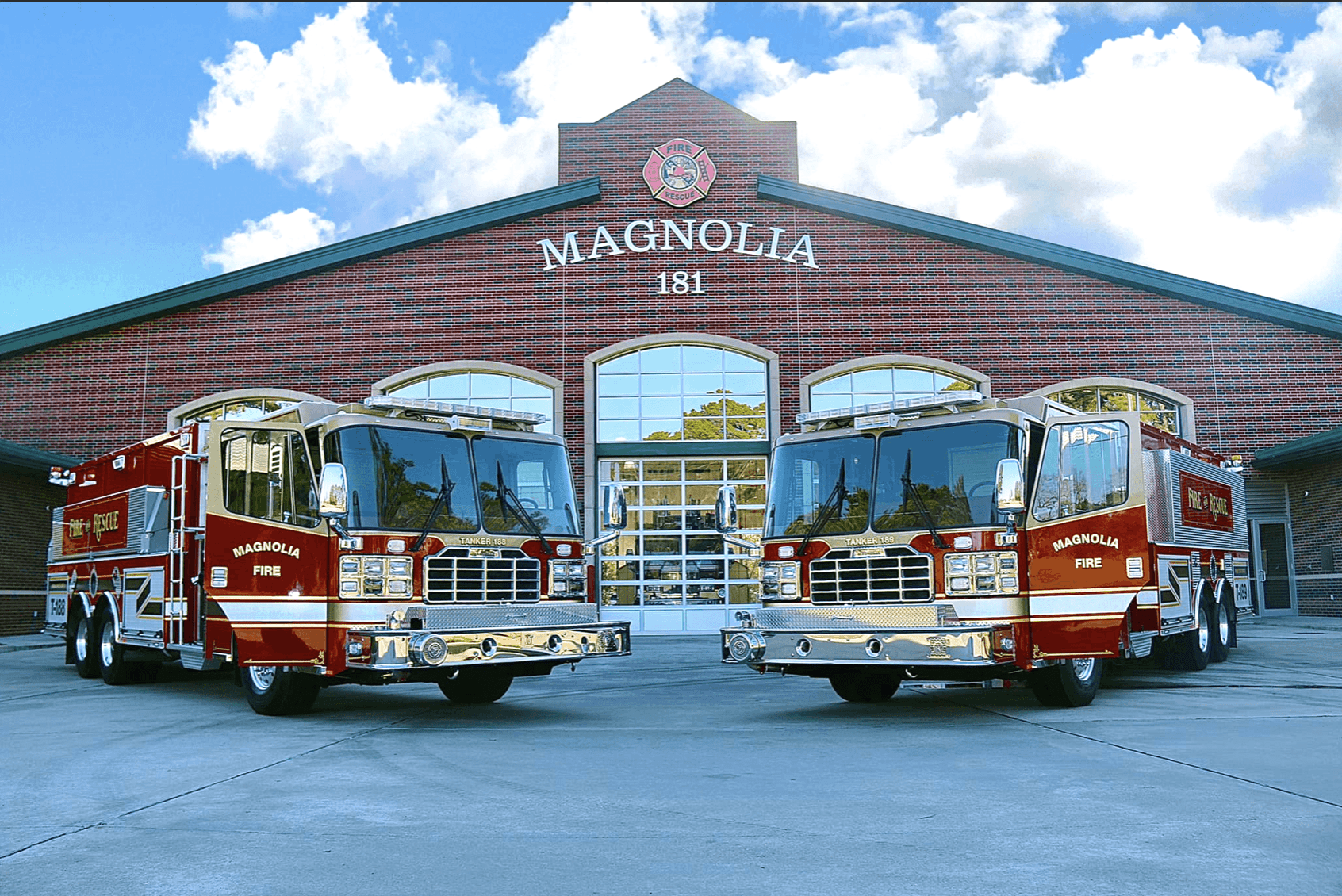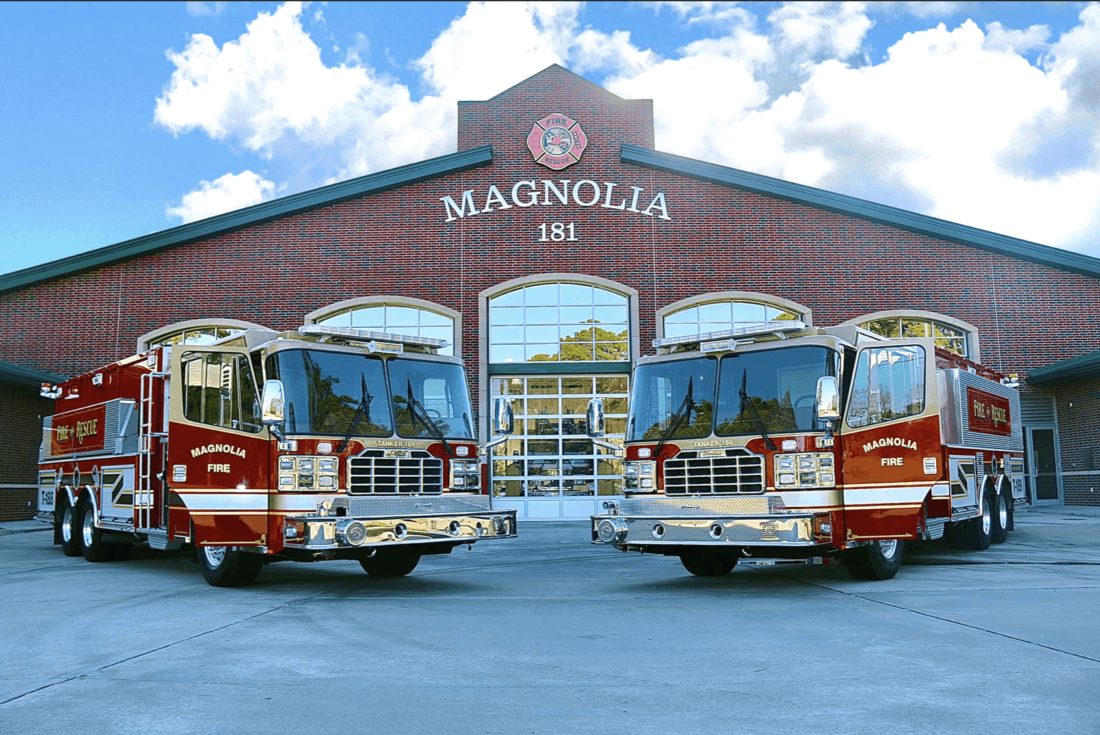
 Small Texas Town Puts its Drone Program to Work Combatting Natural Disasters
Small Texas Town Puts its Drone Program to Work Combatting Natural Disasters
By DRONELIFE Features Editor Jim Magill
Since the spring of 2023, when it first began operating a drone program, the fire department of the small city of Magnolia, Texas has put its UAV to work to deal with a number of floods and wildfires.
In addition to having to deal with such natural disasters in recent years, Magnolia, a suburban/rural community about 45 miles northwest of Houston, also has seen the impacts of increasing population growth and urbanization, Bryan Perry, captain of the city’s fire department and the department’s only Part 107-certified drone pilot, said in an interview.
“Our area is rapidly growing,” he said. “We have 164 square miles of territory and our population is drastically increasing.”
In May 2023 Magnolia Fire Department initiated its first drone program with a single drone and has since upgraded to the operation of a DJI Matrice 30T — equipped with high-resolution cameras and thermal-imaging equipment. The department recently announced that it received a Certificate of Authorization (COA) from the FAA, which will allow it to scale up its drone program by adding more UAVs to its fleet and providing pilot training for its firefighters.
Perry said that since its launch, the department’s drone program has enhanced its firefighters’ ability to respond to a series of natural disasters that have hit the city.
“Last year was remarkably hot and dry. We went through several wildfires — pretty large wildfires that burned multiple houses and just having that aerial view of what the fire was doing helped us out,” he said.
In addition, the rapid outward expansion of the Houston metropolitan area has reached the boundaries of what was once a sleepy, mostly rural community.
“There used to be a whole bunch of suburbs between us and Houston, but now it’s rapidly getting closer to our area,” Perry said. While there are still wide swaths of rural acreage in the department’s coverage territory, much of the once-open land is increasingly being converted into housing developments. More development has meant more structure fires.
Here again, the fire department’s drone has proved to be a useful tool, helping the department battle fires, in ways that would otherwise not be possible. For example, the Matrice’s thermal-imaging technology allows first responders to train its cameras on the roof of a building to detect hidden hot spots, which “if you put a firefighter on there, they would fall through,” he said.
Just within the past few weeks, the area has seen other disastrous conditions brought on by a series of heavy rain events, including Hurricane Beryl, a Category 1 storm that slammed into the region in mid-July, felling hundreds of trees, knocking out power to almost 3 million people across the greater Houston area and causing flooding in Magnolia.
“The reason why we want the bigger drone is that it can fly in the rain,” Perry said. “We’ve had quite a few flooding events over the past year, and our territory does flood quite a bit, so it’s nice to have that drone.
The UAV’s thermal-imaging abilities can come in handy whenever the department engages in floodwater-rescue operations. “Whether it’s hot outside or not, that floodwater is cold,” Because the Matrice is able to pick up on the heat signature of a human body, first responders are able to locate people who are trapped in floodwaters. “So, if they were to be swept away or something, it’d be very easy for us to keep our eyes on them and find them.”
Drones are also useful tools for checking out cars and other vehicles trapped in floodwaters, Perry said. “We can fly it out there, see the car and make sure that there’s nobody in there.” He added that although a number of other emergency response agencies in the area fly drones, the Magnolia Fire Department is one of the only such local agencies to have used their drone to respond to flooding events in this way.
“I think that’s an untapped use for these drones as far as keeping our firefighters safer,” he said.
MFD poised to ramp up drone program
Perry said with its COA approval, the fire department is poised to take its drone operations to the next level, including securing FAA approval to conduct flights beyond the visual line of sight. “We haven’t completed that process yet. We still have to do our concept operations meeting with [FAA officials], but we are getting closer,” he said.
Department officials also hope to be able to buy and deploy more drones in the future. “We’re hoping to maybe not have as big of one as what we’re using now, but we do want to put a smaller version in cars,” he said. Plans call for purchasing drones to be transported in each battalion chief’s vehicle. These addition UAVs would likely be smaller models than the Matrice and but would still be equipped with the thermal capabilities that Magnolia’s firefighters have found so useful.
Perry said he is familiar with the controversy in Texas and across the country regarding whether public service agencies such as fire departments should be deploying drones manufactured by DJI and other Chinese companies. But he doesn’t think the frequently cited national security concerns regarding Chinese-made drones present much of an issue for his department.
“Right now, we’re just using (the Matrice 30T) until something more reliable comes along that can help our pilots. The one thing that they have right now that we’re really utilizing, until we become subject matter experts, is the obstacle avoidance,” he said.
“We’re not out there to spy on people or to do anything like that. The drone is legitimately not going to take a lot of videos,” Perry said. “We think that the risk of not having a sophisticated obstacle-avoidance system has a higher risk of endangering our citizens then whatever the controversy is with the Chinese government.”
Read more:

 Jim Magill is a Houston-based writer with almost a quarter-century of experience covering technical and economic developments in the oil and gas industry. After retiring in December 2019 as a senior editor with S&P Global Platts, Jim began writing about emerging technologies, such as artificial intelligence, robots and drones, and the ways in which they’re contributing to our society. In addition to DroneLife, Jim is a contributor to Forbes.com and his work has appeared in the Houston Chronicle, U.S. News & World Report, and Unmanned Systems, a publication of the Association for Unmanned Vehicle Systems International.
Jim Magill is a Houston-based writer with almost a quarter-century of experience covering technical and economic developments in the oil and gas industry. After retiring in December 2019 as a senior editor with S&P Global Platts, Jim began writing about emerging technologies, such as artificial intelligence, robots and drones, and the ways in which they’re contributing to our society. In addition to DroneLife, Jim is a contributor to Forbes.com and his work has appeared in the Houston Chronicle, U.S. News & World Report, and Unmanned Systems, a publication of the Association for Unmanned Vehicle Systems International.
Miriam McNabb is the Editor-in-Chief of DRONELIFE and CEO of JobForDrones, a professional drone services marketplace, and a fascinated observer of the emerging drone industry and the regulatory environment for drones. Miriam has penned over 3,000 articles focused on the commercial drone space and is an international speaker and recognized figure in the industry. Miriam has a degree from the University of Chicago and over 20 years of experience in high tech sales and marketing for new technologies.
For drone industry consulting or writing, Email Miriam.
TWITTER:@spaldingbarker
Subscribe to DroneLife here.


